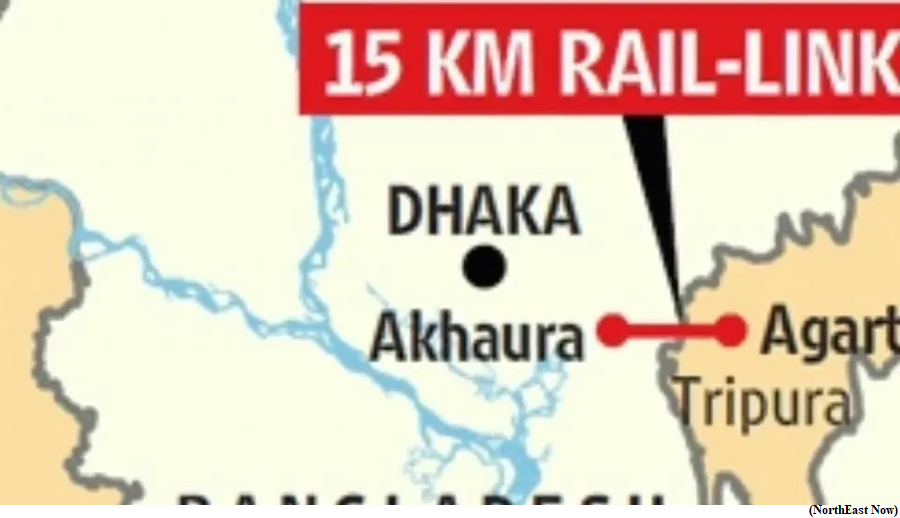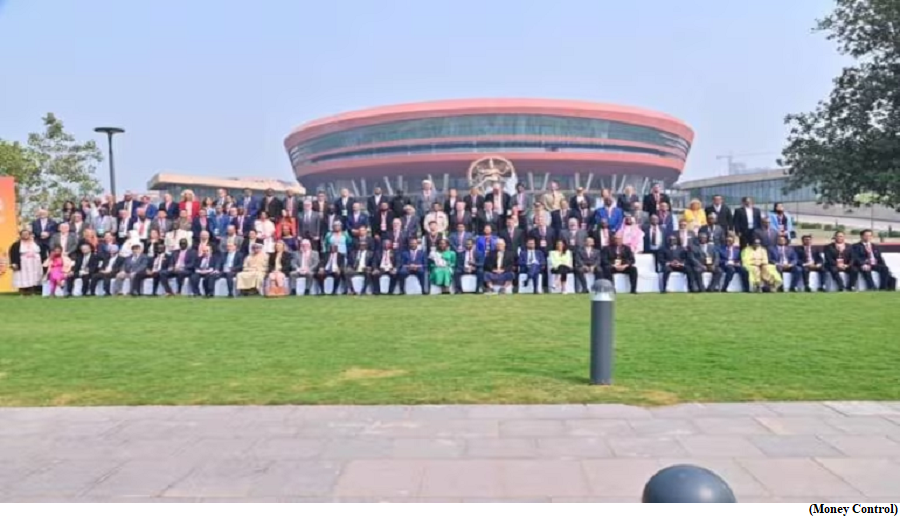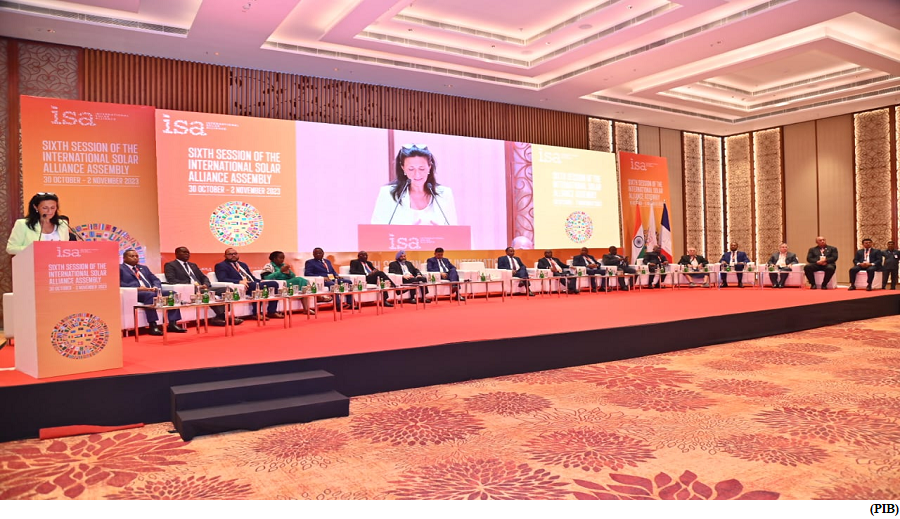Akhaura Agartala rail link to be inaugurated virtually (GS Paper 3, Economy)

Why in news?
- Bangladesh and northeast India will re-establish rail connectivity through Tripura, after a gap of nearly seven and a half decades.
- The Akhaura-Agartala rail link will be inaugurated virtually by Indian Prime Minister and his Bangladesh counterpart.
Why it matters?
- This rail link is being seen as a first step to connect Tripura to Kolkata through Bangladesh. At present, trains to Agartala must run through a longer route via Guwahati and Jalpaiguri stations.
- The link will significantly reduce the time and distance needed to reach Tripura, southern Assam, and Mizoram from Kolkata.
- It will also help boost India-Bangladesh trade in agriculture products, tea, sugar, construction items, iron and steel, consumer items, besides people-to-people ties.
- The Akhaura-Agartala Cross-Border Rail Link project was supported by a grant aid of ₹392.52 crore extended to Bangladesh by the Indian government.
Connectivity boost:
- The rail link is 12.24 km, with a 6.78-km dual gauge line in Bangladesh and 5.46 km in Tripura.
- As part of the preparation, a goods train from Bangladesh carried out a trial run between the two stations.
Historical aspect:
- The Akhaura junction, located in Bangladesh’s Brahmanbaria district, is part of the Chittagong division, and has a rich history of commercial and cultural ties with India’s north-eastern region since the colonial era.
- One of the main drivers behind the initial construction of the junction in the late 19th century was the demand from Assam’s tea industry, which wanted a connection to the Chittagong port.
Background:
- It was during the visit of Bangladesh Prime Minister Sheikh Hasina to New Delhi in January 2010, the two countries agreed to lay the tracks from Akhaura in Brahmanbaria to Nischintapur of Agartala.
- The construction of a 15.064-km-long new railway line was started in 2018. Of these, a 5.05-km-long rail route falls in India and the remaining 10.014-km-long rail route falls in Bangladesh.
ISA to provide 10 million dollar to the GSF
(GS Paper 3, Environment)
Why in news?
- The International Solar Alliance (ISA) announced that the Global Solar Facility (GSF) is set to receive a capital contribution of $35 million dollars.

About GSF:
- The Global Solar Facility (GSF) is designed to catalyze solar investments in underserved segments and geographies across Africa, unlocking commercial capital in the process.
- In 2022, the ISA Assembly approved the Global Solar Facility, which is expected to attract private capital to flow into off-grid solar projects, rooftop solar projects, and productive use solar projects.
- This financing vehicle, bolstered by payment guarantees, insurance, and investment funds, aims to
- mitigate project risks,
- provide technical assistance to address regulatory gaps,
- reduce currency risks, and
- resolve contractual and financial uncertainties in the solar energy sector.
- The Government of India is considering a $25 million investment as capital contribution in the GSF in addition to $10 million coming from the ISA. Bloomberg Philanthropies and CIFF have also committed their support to the GSF.
Diversifying investments in solar energy in Africa:
- The ISA highlighted the need for diversifying investments in solar energy in Africa for mitigating climate change and a balanced energy transition.
- Despite its vast solar potential, Africa possesses only 1.3% of the world’s installed solar capacity (11.4 GW out of 849 GW in 2021). With nearly 600 million people in Africa lacking access to electricity, there exists a compelling case for distributed solar power projects.
- Following the approval and launch of GSF at COP27, the ISA Secretariat has been conducting discussions with potential investors including member countries, development finance institutions, pension funds, and potential investment managers from across the world.
- The ISA has signed Memorandum of Understanding (MOUs) with Multi-Lateral Investment Guarantee Fund (MIGA), Africa 50, West African Development Bank (BOAD) for facilitating investments through the GSF in Africa.
What’s next?
- After Africa, the GSF aims to expand to regions such as Asia, Latin America and the Middle East, where the Regional Facilities will be tailored to meet specific requirements.
- In the future, GSF plans to invest in innovative technologies to enhance solar energy efficiency, support startups for faster solar energy implementation, and explore emerging solar energy sectors.
India hosts the 6th Session of the International Solar Alliance Assembly
(GS Paper 3, Environment)
Why in news?
- The Sixth Assembly of the International Solar Alliance (ISA) was hosted at Bharat Mandapam, in New Delhi.

Details:
- It was presided over by the Union Minister for Power and New & Renewable Energy in his capacity as the President of the ISA Assembly.
- Ministers from 20 countries and delegates from across 116 Member and Signatory countries participated in the Assembly.
Viability Gap Funding:
- Renewable energy sources have the potential to supply 65 percent of the world's total electricity by 2030 and decarbonise 90 percent of the power sector by 2050.
- The 6th Assembly of ISA has decided to increase viability gap funding for projects from 10% up to 35%. “The ISA has a programme for VGF so that viability gap funding is available for projects in developing countries.”
- The grant provided under the mechanism is USD 150,000 or 10% of the project cost (whichever is lower), per country per project.
Four projects set up with ISA’s assistance were inaugurated. These projects are:
- Solarisation of the Parliament building of the Republic of Malawi
- Solarisation of two rural health care centres in the Republic of Fiji, with an 8-kW solar PV system and 20-kWh battery storage capacity for each health centre
- Installation of 1 solar powered cold storage of capacity 5 MT for the benefit of agricultural stakeholders at La Digue Island, Republic of Seychelles
- Solarisation of the Nawai Junior Secondary school (JSS) in the Republic of Kiribati, with a 7 kW Solar PV rooftop system paired with a 24-kWh BSS
About ISA Assembly:
- The Assembly is the apex decision-making body of ISA, in which each Member Country is represented. This body makes decisions concerning the implementation of the ISA’s Framework Agreement and coordinated actions to be taken to achieve its objective.
- The Assembly meets annually at the ministerial level at the ISA’s seat. It assesses the aggregate effect of the programmes and other activities in terms of deployment of solar energy, performance, reliability, cost, and scale of finance.
- The Sixth Assembly of the ISA is deliberating on the key initiatives of ISA on three critical issues energy access, energy security, and energy transition.




